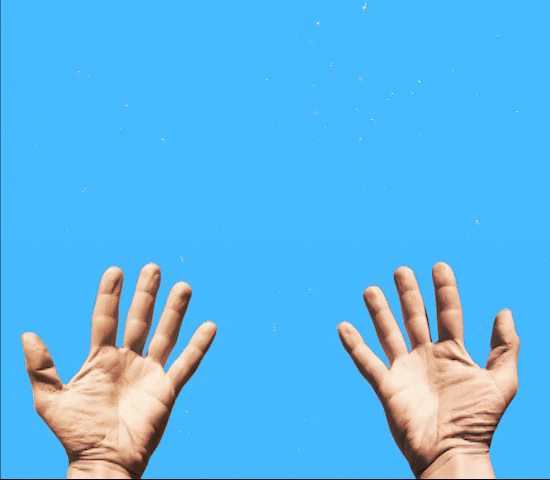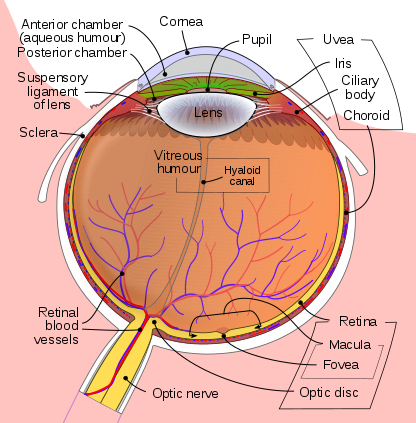Introspection literally means “to look inside”. Your eye is a camera made of meat – here are two ways to use your eyes to look at their own structure.
The Blue Field Entopic Phenomena
Stare up at a clear blue sky. (If no blue sky is available, for instance, if you’re in Seattle and it’s January, I was able to get a weaker version by putting my face close to this image instead. Your mileage may vary.)

Animation of the phenomena. Made by Wikimedia user Unmismoobjectivo, under a CC BY-SA 3.0 license.
Notice tiny white spots with dark tails darting around your field of vision? You’re looking at your own immune system – those are white blood cells moving in the capillaries in your retina. Normally transparent, they reflect blue light. The darker tails are build-ups of smaller red blood cells in the narrow capillaries, which are all but blocked by the large white blood cells.
This is clear enough that the speed at which the dots move can be used to accurately measure blood pressure in the retina. To do this, patients compare their blue field entopic phenomena to animated dots moving at various speeds. I wanted to find some calibrated gifs to try this at home, so if you see some, let me know.
On the other hand, if you see things that look like this all the time everywhere, it might be visual snow.
2. The Purkinje Tree
WARNING: A cell phone flashlight probably isn’t strong enough to damage your eyes, but especially if you try this with anything stronger than that, or if you have a condition that would make it very bad to accidentally shine a flashlight in your face, use your own judgement on proceeding.
Stand or lie down in a dark room.
Turn on your phone flashlight or a penlight, and hold it up against the side of your face.
Position yourself so that you’re looking into darkness, and the light beam passes just over the front of your eyes – you’re trying to get light to go across the surface of your pupil, but not directly into your eyes.
You might need to adjust the angle.
What you’re looking for is the Purkinje tree – shadows of the retinal blood vessels cast onto other parts of the retina. It was first seen by legendary Czech anatomist Jan Evangelista Purkynê, who also found Purkinje brain cells, sweat glands, and Purkinje fibers in the heart, and introduced the terms “blood plasma” and “protoplasm”.

The Purkinje Tree reminded me of aerial photos of branching riverbeds, as in this NASA photo of the Yarlung Tsangpo River in Tibet. So look for a structure like this.
Once you see it, the image will vanish quickly – your brain already gets an image of the blood vessels on the retina, so it’s used to removing it from your perception and will adapt. If you waggle the light source gently at about one hertz (once per second), the image stays visible.
Happy new year from Eukaryote Writes Blog!
This blog has a Patreon. If you like what you’ve read, consider giving it your support so I can make more of it.

